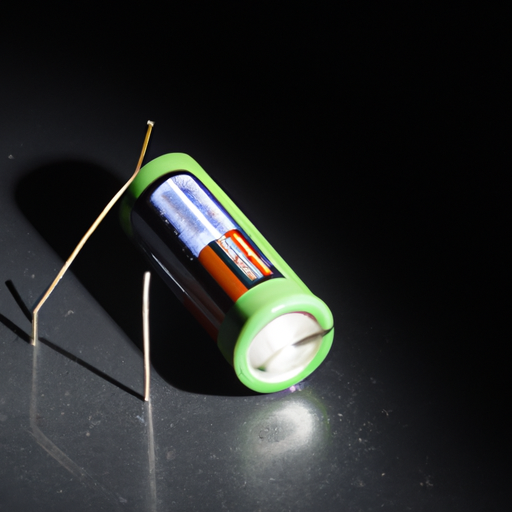Capacitor charging is a fundamental process in electronics that involves storing electrical energy in a capacitor. Capacitors are passive electronic components that consist of two conductive plates separated by an insulating material known as a dielectric. When a voltage is applied across the plates, the capacitor stores energy in the form of an electric field.

There are two main methods of charging a capacitor: constant voltage charging and constant current charging. In constant voltage charging, a fixed voltage is applied across the capacitor, causing the voltage across the capacitor to increase linearly over time. In constant current charging, a fixed current is applied to the capacitor, causing the voltage across the capacitor to increase exponentially over time.
The charging process can be visualized using the voltage-current relationship of a capacitor. When a voltage is applied across a capacitor, the current initially flows into the capacitor, charging it up. As the capacitor charges, the current decreases exponentially, approaching zero as the capacitor reaches full charge. At this point, the capacitor is fully charged, and the voltage across its terminals is equal to the applied voltage.
The time it takes for a capacitor to charge up to a certain voltage depends on the capacitance of the capacitor and the resistance of the circuit. The time constant of a capacitor charging circuit is given by the product of the capacitance and the resistance, τ = RC. The time constant represents the time it takes for the capacitor to charge up to approximately 63.2% of the applied voltage.
Capacitor charging is a crucial process in many electronic circuits, such as power supplies, filters, and timing circuits. In power supplies, capacitors are used to store energy and smooth out voltage fluctuations, providing a stable output voltage. In filters, capacitors are used to block or pass certain frequencies, depending on their capacitance value. In timing circuits, capacitors are used to control the timing of events by charging and discharging at specific rates.
Capacitor charging can also be used in energy storage applications, such as in electric vehicles and renewable energy systems. Capacitors can store energy quickly and efficiently, making them ideal for applications that require rapid energy storage and discharge. In electric vehicles, capacitors can be used to store regenerative braking energy and provide a power boost during acceleration. In renewable energy systems, capacitors can be used to store excess energy from solar panels or wind turbines for later use.
Overall, capacitor charging is a fundamental process in electronics that plays a crucial role in many applications. By understanding the principles of capacitor charging, engineers and designers can develop more efficient and reliable electronic systems. Whether it's in power supplies, filters, timing circuits, or energy storage applications, capacitors are essential components that enable the efficient storage and transfer of electrical energy.
Capacitor charging is a fundamental process in electronics that involves storing electrical energy in a capacitor. Capacitors are passive electronic components that consist of two conductive plates separated by an insulating material known as a dielectric. When a voltage is applied across the plates, the capacitor stores energy in the form of an electric field.

There are two main methods of charging a capacitor: constant voltage charging and constant current charging. In constant voltage charging, a fixed voltage is applied across the capacitor, causing the voltage across the capacitor to increase linearly over time. In constant current charging, a fixed current is applied to the capacitor, causing the voltage across the capacitor to increase exponentially over time.
The charging process can be visualized using the voltage-current relationship of a capacitor. When a voltage is applied across a capacitor, the current initially flows into the capacitor, charging it up. As the capacitor charges, the current decreases exponentially, approaching zero as the capacitor reaches full charge. At this point, the capacitor is fully charged, and the voltage across its terminals is equal to the applied voltage.
The time it takes for a capacitor to charge up to a certain voltage depends on the capacitance of the capacitor and the resistance of the circuit. The time constant of a capacitor charging circuit is given by the product of the capacitance and the resistance, τ = RC. The time constant represents the time it takes for the capacitor to charge up to approximately 63.2% of the applied voltage.
Capacitor charging is a crucial process in many electronic circuits, such as power supplies, filters, and timing circuits. In power supplies, capacitors are used to store energy and smooth out voltage fluctuations, providing a stable output voltage. In filters, capacitors are used to block or pass certain frequencies, depending on their capacitance value. In timing circuits, capacitors are used to control the timing of events by charging and discharging at specific rates.
Capacitor charging can also be used in energy storage applications, such as in electric vehicles and renewable energy systems. Capacitors can store energy quickly and efficiently, making them ideal for applications that require rapid energy storage and discharge. In electric vehicles, capacitors can be used to store regenerative braking energy and provide a power boost during acceleration. In renewable energy systems, capacitors can be used to store excess energy from solar panels or wind turbines for later use.
Overall, capacitor charging is a fundamental process in electronics that plays a crucial role in many applications. By understanding the principles of capacitor charging, engineers and designers can develop more efficient and reliable electronic systems. Whether it's in power supplies, filters, timing circuits, or energy storage applications, capacitors are essential components that enable the efficient storage and transfer of electrical energy.